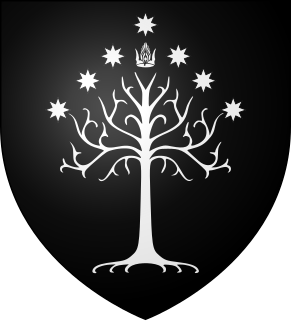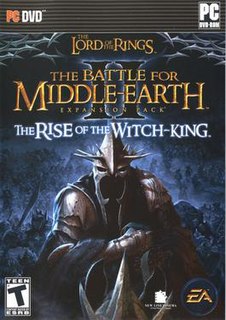This article is being considered for deletion in accordance with Wikipedia's deletion policy. Please share your thoughts on the matter at this article's entry on the Articles for deletion page. |
| Pelendur | |
|---|---|
| Tolkien character | |
| Information | |
| Aliases | Steward of Gondor |
| Race | Man (Middle-earth) |
| Book(s) | The Return of the King |
Pelendur is a fictional character in J. R. R. Tolkien's Lord of the Rings , appearing The Return of the King .
He was Steward of Gondor in the year 1944 Third Age. He was born in T.A. 1879 and was a descendant of Húrin of Emyn Arnen, an earlier Steward of Gondor and the grandfather of Mardil Voronwë, the first Ruling Steward of Gondor.
Pelendur helped Gondor through a constitutional crisis following the premature death of King Ondoher and his sons Artamir and Faramir while fighting the Wainriders. He effectively ruled the kingdom for one year while observing the claims of the two claimants, Prince Arvedui of Arthedain, and the general Eärnil II who was victorious in battle against the Wainriders (Easterlings). Arvedui was the heir of Isildur and his wife was Fíriel, a daughter of Ondoher. Eärnil was part of the Royal House of Gondor but not part of the direct line of succession, his great-grandfather Arciryas was the brother of Narmacil II, and Eärnil's great-great-grandfather was King Telumehtar Umbardacil.
Pelendur dismissed Arvedui's claim maintaining that the rule of Gondor belonged to the heirs of Anárion, even though Isildur was the High King of both Gondor and Arnor before his death. Arvedui stated while Isildur did leave Gondor to take up the rule of Arnor, he did not relinquish the rule of Gondor and remained at the head of succession, as Anárion's son Meneldil was installed as regent. Nor did he intend the realms to be estranged forever, though Meneldil did otherwise. To this, the Council of Gondor made no answer.
Arvedui also argued, his wife Fíriel, the daughter of Ondoher should rightfully become Ruling Queen due to the old Númenórean law of accession, which stated the eldest remaining child of the King should inherit the throne. Arvedui had also based his claim on the fact that he had married a descendant of Anárion, so that reunited the lines of the brothers. Pelendur rejected Fíriel's claim saying in Númenor, it was peaceful enough to have women as rulers. However, the Realms-in-Exile were constantly under attack and therefore needed a male ruler to lead the armies. Based on the afore-mentioned arguments, the Council of Gondor, under the influence of Pelendur, choose Eärnil as King, defying the Númenórean law of succession, which was said to be inapplicable in a warring state like Gondor.
On one hand, Eärnil's selection may have averted another kin strife. Eärnil, the victorious general, had become a hero in Gondor and had the support of the populace for his deeds in battle. Installing Arvedui, a foreigner, as king could have stirred up resentment amongst the people of the coastlands and the supporters of Eärnil, who had saved Gondor. Also, common sentiment in Gondor saw Arthedain as a shadow of the former glory of Arnor, for all of lineage of its lords. Surprisingly, Eärnil did not share the views of most of his subjects and he attempted to renew contact between the estranged kingdoms, even sending a great force led by his son Eärnur to try to defend Arthedain when the Witch-king was preparing a final assault against it. Unfortunately, most of his efforts were preoccupied with rebuilding Gondor after their nearly disastrous war against the Wainriders and his aid to the North-kingdom was too late.
On the other hand, Pelendur's choice denied the heirs of Isildur the chance to reunite the Realms-in-Exile. Malbeth the Seer, who named Arvedui at birth, said that many sorrows and ages and lives of men would pass before there could be another chance to reunite the crown and sceptre (which were the symbols of royalty of Gondor and Arnor, respectively). It was said that much evil would have been averted had Arvedui ascended the throne of Gondor. While Isildur and Anárion's (through Fíriel) line would be maintained in the north, the southern line of succession ended not long after Eärnil's death. Eärnil's son and heir Eärnur did not take a wife and had little interest in ruling. Caring only for war and battles, he answered the challenge of the Witch-king of Angmar and never returned, leaving Gondor without a king. It could thus be said that Pelendur's actions precipitated the line of Ruling Stewards.
Though their realm did not, the heirs of Arvedui did survive, and carried on the (combined) line of Isildur and Anárion, and the claim of Arvedui would never be forgotten although it would be a thousand years before Aragorn invoked it. This political precedent (choosing a Gondorian rather than an heir of Isildur with a more direct claim to the throne) is one reason for Aragorn's caution in assuming the throne of Gondor at the end of the Third Age.
He died in T.A. 1998 and at this point the office of Steward officially became hereditary in the House of Húrin. [1]
| Preceded by Unknown | Stewards of Gondor | Succeeded by Vorondil the Hunter |





